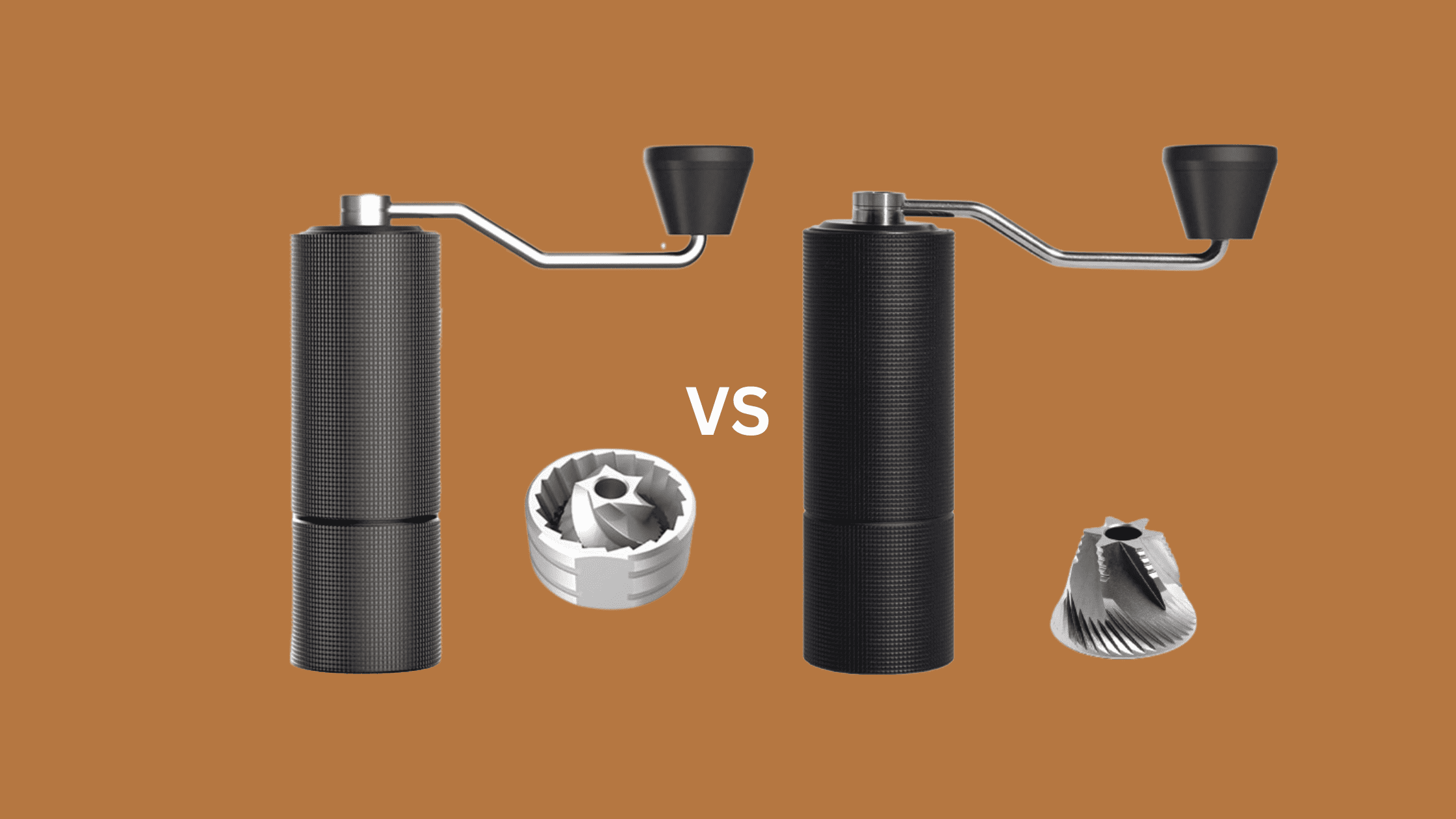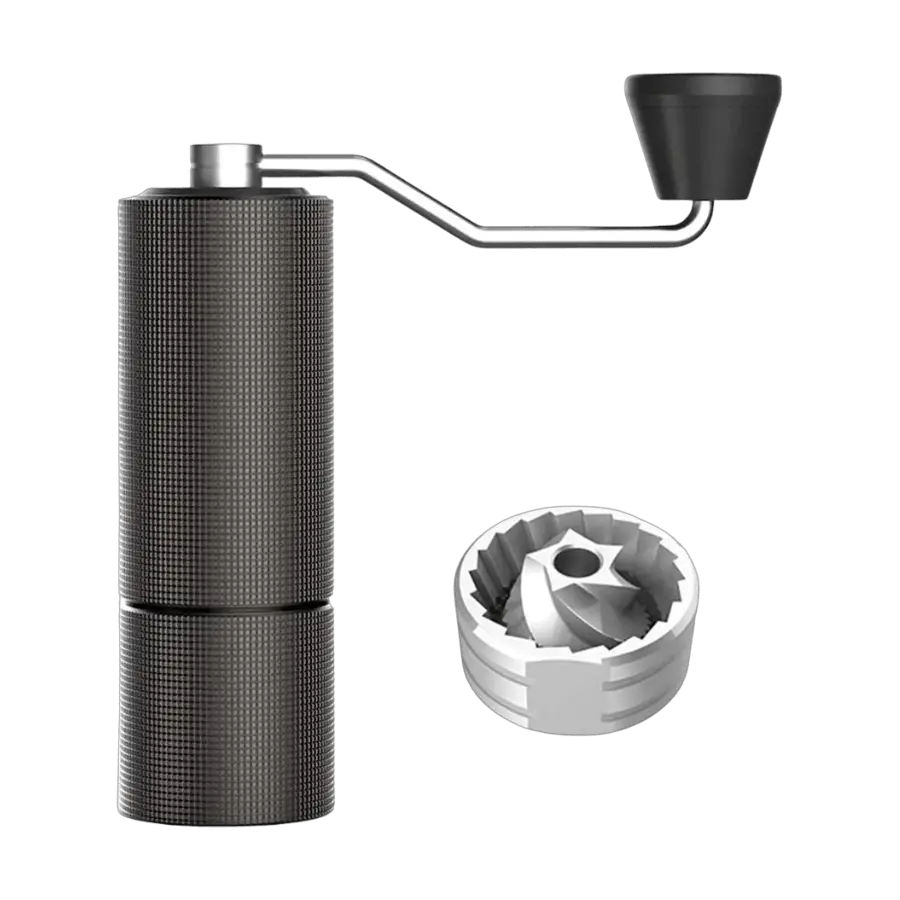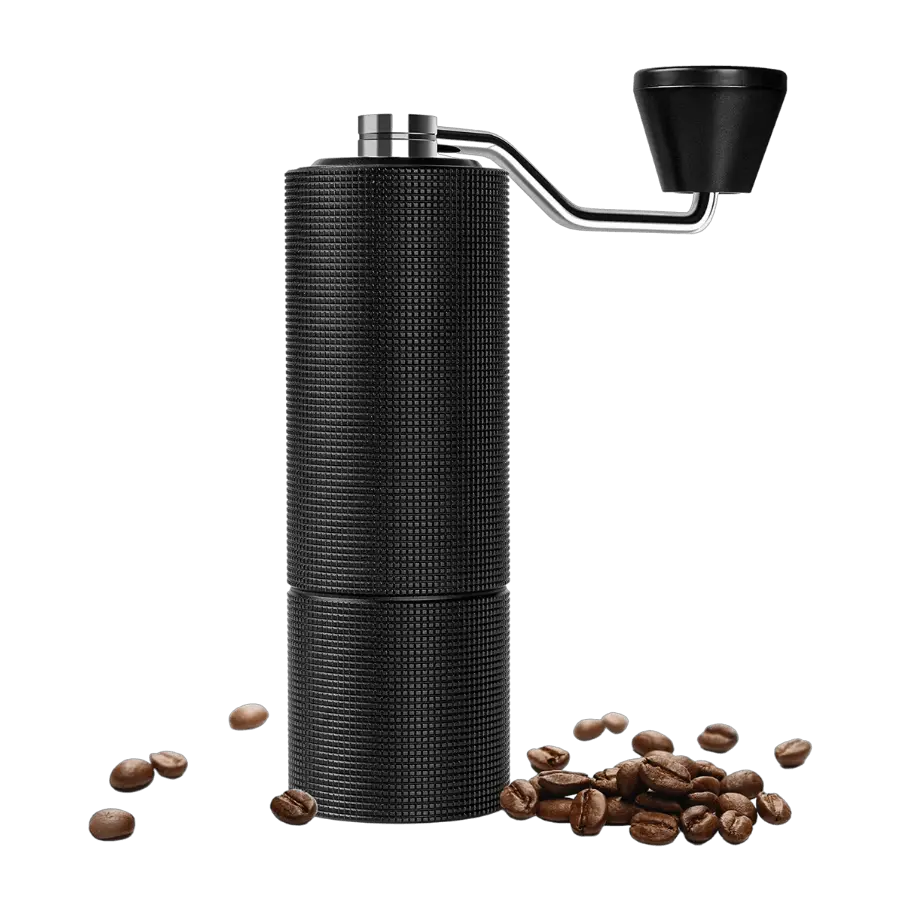For coffee lovers, the quest for the perfect cup of joe is a never-ending journey.
A crucial aspect of achieving coffee perfection lies in the quality of your coffee grinder.
Timemore, a respected name in the coffee industry, offers two popular options – the C2 and the C3.
These hand grinders have garnered quite a following, thanks to their sleek design, precision, and affordability.
However, if you already own a Timemore C2, you might be wondering whether it’s time to consider an upgrade to the C3 model.
In this blog post, we’ll take an in-depth look at these two grinders, comparing their features, grind quality, and overall performance.
We’ll also address the burning question on the minds of many coffee enthusiasts: Is upgrading from the Timemore C2 to the C3 worth the investment?
Overview Of Timemore
Timemore, a Chinese coffee equipment brand founded by coffee enthusiasts in 2012, is renowned for its original coffee-making gear.
They create manual coffee grinders, coffee scales, kettles, and more.
Their designs focus on professionalism, aesthetics, user-friendliness, and honesty.
Timemore’s goal is to help people savor slower moments in our fast-paced world through coffee rituals.
With rich supplier resources and control over their supply chain and production, they provide customizing services like OEM for international brands and well-known Chinese enterprises.
Their modern, functional, and aesthetically pleasing coffee equipment has earned them numerous international awards.
Timemore boasts a substantial lineup of hand-cranked grinders.
Notably, the Chestnut C2 and C3 are designed to be both powerful and portable.
For travelers, the Nano and Chestnut Slim offer more compact options.
On the other hand, the Xlite features a larger burr set for high performance.
Among their affordable hand grinder options, the Chestnut C2 and C3 stand out.
Timemore products are known for their efficient grinding, precise mechanisms, stylish designs with a secure grip, and a capacity that varies based on bean density.
Design And Build Quality
Timemore C2
Timemore C3
The C3 might not seem like it’s breaking any design records on the surface, but hey, if it ain’t broke, why fix it?
The C2 was already doing great, and the C3 followed a similar aesthetic vibe.
The C2 sticks to the 2020 manual grinder design trend, keeping it simple and effective with a minimalist black version and some other color choices that might not be as cool as the black one.
Now, enter the C3. It rocks a dark grey aluminum body with a cool textured surface for that extra grip.
The color’s a tad darker than the C2, adding a touch of distinction.
Both are compact and sleek, standing at about 7.5 inches tall with a 2.5-inch diameter.
Constructed with an aluminum body and plastic stabilizers featuring dual-bearing stability, these grinders mean business.
The base models come with a stainless steel crank handle that easily detaches for convenient packing.
However, there’s a Pro model with a collapsible handle for both the C2 and C3, maintaining a similar weight, size, and profile in both standard and Pro versions.
Both the Timemore C2 and C2 Pro have a familiar design and share the same 38-millimeter stainless steel burrs.
However, the main difference between them is that the C2 Pro has an aluminum adjustment dial, while the C2 has a plastic one.
Given that you’ll be tweaking grind settings often with these all-purpose grinders, the adjustment dial is a big deal, and aluminum gets the nod.
Now, the C3 steps up its game with a steel dial indicator (like the C2 Pro), a significant upgrade over the plastic one on the base C2.
Little design enhancements like this show that the C3 isn’t just a sequel; it’s an improved version of the C2, making it clear that sometimes, small changes make a big difference.
Burr Set
Alright, let’s break down the burr talk for the Timemore C2 and C3.
Both sport stainless steel conical burrs, but the C3 kicks it up a notch with an upgraded set called S2C660.
Fancy name, right? This set follows the patented philosophy of S2C (Spike To Cut), bringing in secondary cutting action for a unique grind.
Take a peek at the inner cone burr of the C3—it’s a bit different.
You’ll notice vertical lines running up the upper part, inspired by the burr set in Timemore’s flagship model, the Chestnut X.
But they’re not exactly twins.
These C3 burrs are a tad smaller at 38 mm, compared to the 42 mm on the Chestnut X, and they’ve got their own geometry.
When Timemore first introduced the “Spike to Cut” burrs, they thought it was a game-changer.
Turns out, the coffee crowd wasn’t as thrilled.
The burrs were a bit slow, lacking the clarity and sweetness found in competitors like the Comandante C40 and 1Zpresso K-Max.
Now, the S2C burr set aims to boost grinding efficiency and consistency.
The C3’s unique burrs make a difference, especially when you’re dialing in those finer settings.
Grind Quality
The C2 is hanging out in the same grind quality zone as the Baratza Virtuoso+, and for its price, it grinds pretty darn fast.
But, here’s the drawback—the C2 isn’t the espresso hero we hoped for.
Grinding fine enough takes what feels like forever.
We’re talking a solid 5-minute grind for a double shot, and that’s just not cutting it.
Enter the C3, promising to handle espresso like a champ.
And guess what? In our testing, it delivered pretty well.
Thanks to the S2C burrs on the Timemore Chestnut C3, the grind is more consistent compared to its sibling, the C2.
It’s a step up in the espresso game.
The new burr set on the C3 outshines the C2, breaking down coffee beans a tad earlier in the grind chamber.
This extra touch smoothens out any irregularities in the grounds, making for a more uniform grind size.
That matters, especially in the espresso world, where small differences can play a big role in taste.
However, the downside with the C3’s new burr set is that it isn’t as speedy as the C2’s in a typical pour-over setup.
Its grind speed is at around 2.5 grams per second which is on the slower side of things.
That being said, both the C2 and C3 have stepped grind setting adjustments.
Espresso adventures start at 7 clicks on the C3 and 6 on the C2.
For the grand finale of the French press, we’re looking at 20 clicks on the C3 and 24 on the C2.
The surprise we found was that the C2 is more versatile with a few extra settings, but truth be told, the C3 steals the show with its more consistent grind.
To adjust the grind size on both grinders, you need to fully close the adjustment dial to the ‘zero position’, and then count the clicks back to your desired grind setting.
Ease Of Use
Let’s talk user-friendliness with the C2 and C3 and to be honest, both are a breeze to use, so there isn’t much to talk about here.
Loading them up is a smooth process, thanks to the supports inside the grind chamber. No beans bouncing off the edges and playing hard to get into the grinder.
With a decent capacity of about 30g, these grinders can handle a good coffee load.
Plus, those handy vertical lines on the body give you a solid grip when you’re in grind mode.
When it comes to grinding speed, the C2 grinder model performs better than its counterpart, the C3, by zipping through coffee beans with greater speed and ease.
However, the C3’s S2C burrs have extra cutting surfaces, which provide more area for the coffee to navigate.
Due to the lack of those additional cuts, the C2’s burrs find it slightly easier to move coffee through.
However, as we spoke about earlier, the C2’s speed comes at a cost—grind consistency takes a hit.
It might be the quicker option, but the C3 wins in the uniformity game.
So, if you’re all about ease and speed, the C2’s your pal, but if you’re chasing that consistent grind, the C3’s got your back.
The Taste
Both whip up some sweet cups with a subtle aftertaste.
But, after putting them to the test, it’s clear that the C3 has its own flavor signature—sweet with a medium clarity.
However, the aftertaste is a bit short, and there’s a touch of muted acidity.
Now, if you’ve read the whole article up to this point, it’s no secret why the Timemore Chestnut C3 tastes a bit cleaner than its sibling, the C2.
It’s all about that consistent grind from the C3’s S2C burrs.
The C3 produces fewer fine particles, preventing the coffee from getting too muddy.
On the flip side, the C2’s grind inconsistency makes the muddiness a bit more pronounced.
The C2 isn’t the go-to for espresso lovers.
It takes way too long to grind fine enough, leading to inconsistencies in flavor from shot to shot.
The C3 faces a similar challenge, but in the C2 this becomes much more noticeable.
Even in Aeropress and V60 brewing, this grind inconsistency would be quite noticeable.
Value For Money
The Timemore C2 and C3 are both manual coffee grinders that are known for their quality and affordability.
The C2 comes in at around $69, and the C3 is just a tad pricier at $79.
Now, truth be told, for an extra 10 bucks, we’d nudge you towards the C3, and here’s why—the S2C burrs.
They bring more power and capability to the grinding game, making that small price bump worth it.
The C3 punches above its weight, giving you great bang for your buck.
But, hey, if your budget is tighter than tight, the C2 still stands as one of the best low-cost grinders out there.
However, if you can spare just a bit more cash, the C3 steps up the game with added durability and capability, all while keeping your wallet happy.
At just $10 more, that’s a deal we’d say is pretty darn good.
Key Similarities Between Timemore C2 and C3
Compact Design and Portability
Both the Timemore C2 and C3 share a compact design, standing at approximately 7.5 inches tall with a diameter of about 2.5 inches.
This makes them highly portable and suitable companions for coffee enthusiasts on the go.
Aluminum Body and Plastic Stabilizers
In terms of construction, both grinders feature an aluminum body with plastic stabilizers, providing a balance of durability and lightweight design.
This shared build ensures that these grinders can withstand the rigors of daily coffee grinding.
Grind Chamber Support
Both models are equipped with supports inside the grinding chamber, facilitating a user-friendly loading process.
These supports prevent coffee beans from bouncing off the edges, ensuring a smooth and hassle-free grinding experience.
Vertical Grip Lines
To enhance user grip and stability during the grinding process, both the C2 and C3 boast vertical lines on their bodies.
This design feature adds a practical touch to the aesthetics while making it easier for users to maintain a secure hold while grinding.
Capacity and Versatility
With a similar capacity of approximately 30g, the C2 and C3 cater to coffee lovers who enjoy brewing in various methods.
While the C2 is a reliable choice for budget-conscious users, the C3 offers a slight edge in performance for a modest price increase, catering to a wider range of brewing preferences.
The Verdict: Choosing Between The Timemore C2 vs C3
For the Coffee Enthusiasts Ready to Invest: Timemore C3
Now, if you’re ready to up your coffee game and can spare a few extra dollars, the Timemore C3 steals the show.
We would recommend the C3 over the C2.
Priced at around $79, the C3 brings some serious upgrades, particularly in the form of its S2C burrs.
The S2C burrs on the Timemore Chestnut C3 provide a more consistent grind compared to the C2.
This means your coffee will not only taste better but also be less prone to inconsistencies.
For just a $10 difference, the C3 offers a substantial improvement in power and capability, making it a wise choice for coffee enthusiasts who want a bit more from their manual grinder without breaking the bank.
For the Budget-Savvy Brew Aficionados: Timemore C2
If you’re counting every dime and searching for a reliable grinder without breaking the bank, the Timemore C2 is still a great budget-friendly choice.
At around $69, it delivers a solid grinding performance and serves as an excellent entry point for those exploring the world of manual coffee grinding.
FAQ’s
Is Timemore C2 better than C3?
While the Timemore C2 offers a budget-friendly option with good performance, the C3 stands out with an upgraded burr set, providing a more consistent grind, making it a preferred choice for espresso enthusiasts.
Can the Timemore C3 grind espresso?
Yes, the Timemore C3 is designed to grind for espresso, thanks to its upgraded S2C burr set.
It delivers a more refined and consistent grind, making it suitable for espresso brewing.
What grind level for Timemore C3?
The Timemore C3 is versatile and can handle various grind levels.
For espresso, start at around 7 clicks, and for French press, aim for about 20 clicks, offering flexibility for different brewing methods.
Is Timemore C3 worth it?
Considering its enhanced features, including the upgraded burr set and improved grind consistency, the Timemore C3 is worth the slightly higher price, especially for those seeking a more advanced manual coffee grinder.
Can the Timemore Chestnut C2 grind for espresso?
While technically capable of grinding fine enough for espresso, the Timemore C2’s extended grinding time and potential for inconsistencies make it less ideal for espresso brewing compared to the C3.
Is Timemore a Chinese brand?
Yes, Timemore is a Chinese coffee equipment brand known for its innovative and affordable manual coffee grinders, among other coffee-related products.
How many clicks on Timemore C2 for espresso?
For espresso on the Timemore C2, start at around 6 clicks on the grind setting adjustment dial.
Experiment and adjust based on your taste preferences to find the perfect grind size for your espresso shot.





